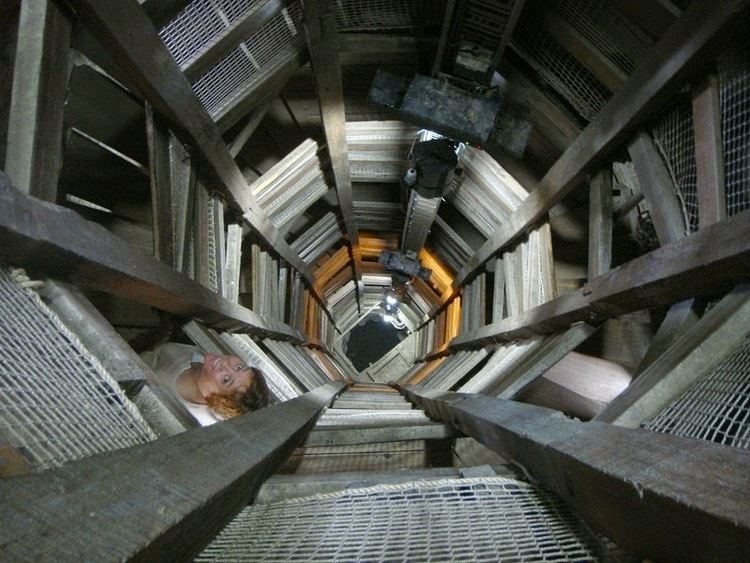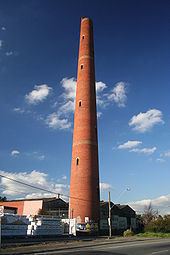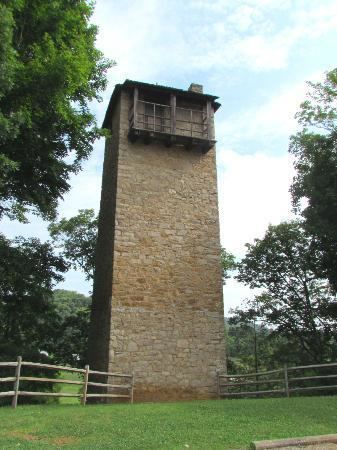Shot tower 1950
A shot tower is a tower designed for the production of small diameter shot balls by freefall of molten lead, which is then caught in a water basin. The shot is primarily used for projectiles in shotguns, and also for ballast, radiation shielding and other applications where small lead balls are useful.
Contents

Baltimore shot tower
Process

In a shot tower, lead is heated until molten, then dropped through a copper sieve high in the tower. The liquid lead forms tiny spherical balls by surface tension, then solidifies as it falls. The partially cooled balls are caught at the floor of the tower in a water-filled basin. The now fully cooled balls are checked for roundness and sorted by size; those that are "out of round" are remelted. A slightly inclined table is used for checking roundness. To make larger shot sizes, a copper sieve with larger holes is used. However, the maximum size is limited by the height of the tower, because larger shot sizes must fall farther to cool. A shot tower with a 40-meter drop can produce up to #6 shot (nominally 2.4mm in diameter) while an 80-meter drop can produce #2 shot (nominally 3.8mm in diameter). A polishing with a slight amount of graphite is necessary for lubrication and to prevent oxidation.
History

The process was invented by William Watts of Bristol, UK, and patented in 1782. The same year, Watts extended his house in Redcliffe, Bristol to build the first shot tower. Shot towers replaced the earlier techniques of casting shot in moulds, which was expensive, or of dripping molten lead into water barrels, which produced insufficiently spherical balls. Large shot which could not be made by the shot tower were made by tumbling pieces of cut lead sheet in a barrel until round.

The "wind tower" method, patented in 1848 by the T.O LeRoy Company of New York City, which used a blast of cold air to dramatically shorten the drop necessary meant that tall shot towers became unnecessary, but many were still constructed into the late 1880s, and two surviving examples date from 1916 and 1969. Since the 1960s the Bliemeister method is used to make smaller shot sizes, and larger sizes are made by the cold swaging process of feeding calibrated lengths of wire into hemispherical dies and stamping them into spheres.


